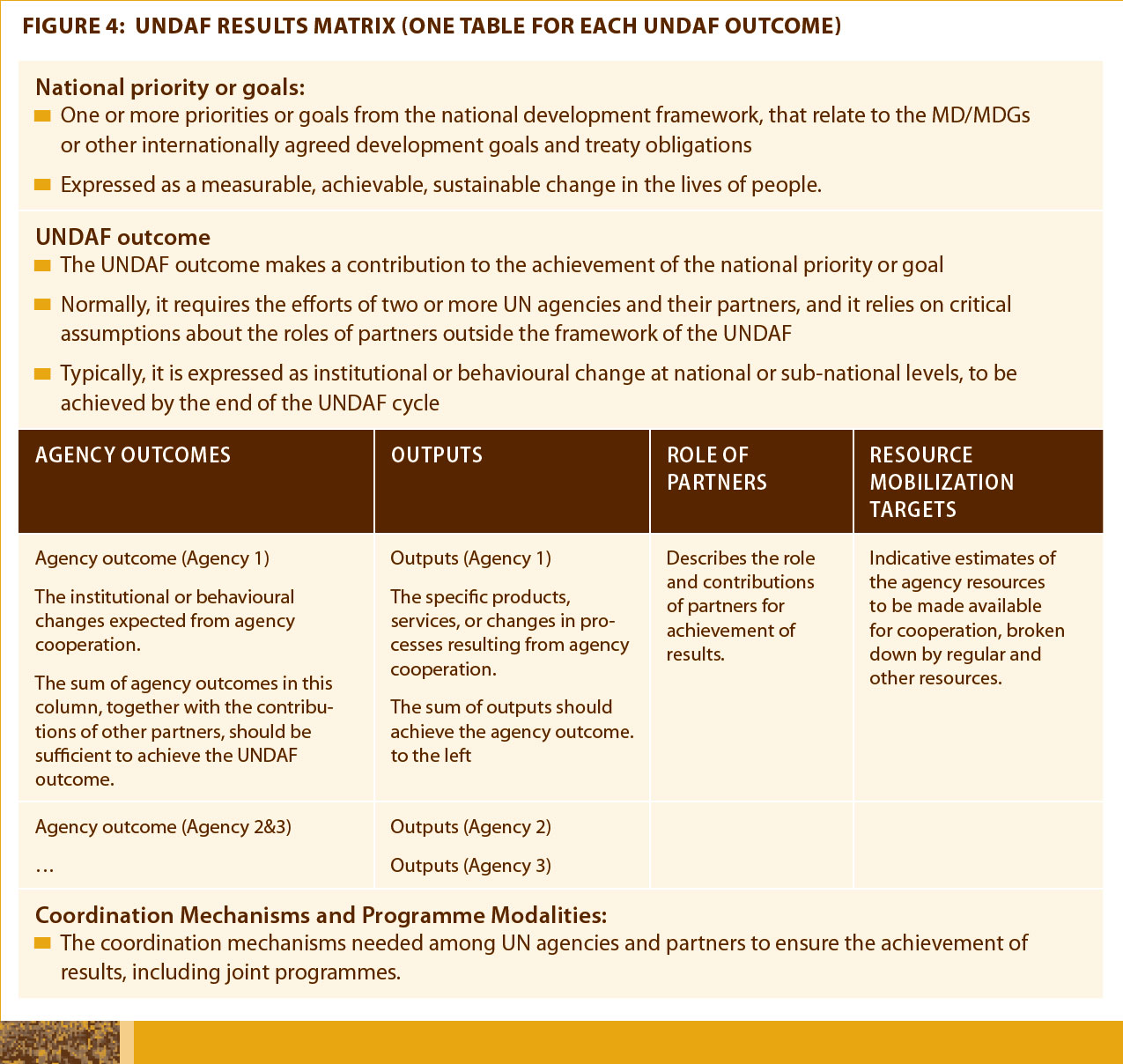6.4 UN Development Assistance Framework (UNDAF)
The UNDAF is a higher-level plan of action for UN development support to a given country. It is “unified” in that it takes into account all UN resident and non-resident agencies, funds and programmes. It is strategic, in that it reflects the priorities of the country as identified through the country assessment. Expected results in the UNDAF are called “UNDAF outcomes.” The UNDAF assumes that the framework meets the strategic priority needs of the country, especially the MDGs.
The UNDAF is the strategic programme framework for the UNCT. It describes the collective response of the UNCT to the priorities in the national development framework. The UNDAF should be focused and it should be open to adaptation to reflect changes in the country situation. The UNDAF offers a single matrix that links the strategic contribution of the UN agencies’ country programmes to targeted national priorities. Through the UNDAF, agencies can plan together and analyze the best response to development needs at the country level. It also underlines the importance of including the broader international agenda of the Internationally-agreed Development Goals (IADGs) as a basis for analysis and planning at country level, in the context of the national development planning process.
UNDAF outcomes describe where the UNCT can best contribute, given their comparative advantages, to the country development process for the achievement of Millennium Development Goals.5 The UNDAF therefore focuses on the actions that UN agencies must take to achieve defined country priority goals. As described in the following table (UNDAF Results Matrix6), the UNDAF defines country programme outcomes and outputs for each UNDAF outcome, describes the roles to be played by each partner and sets resource mobilisation targets. In essence, the UNDAF results matrix assigns responsibilities to particular UN agencies to work with State partners in developing action plans for the achievement of UNDAF outcomes; these action plans become the country programme.

Please refer to Figure 2 in Chapter 5, for a description of the analytic framework within which the UNDAF is developed. Please refer to section 6.5, below, for a discussion on Country Programmes.
Further discussion on the UNDAF, including detail on its development, content and significance is found in the Guidelines, in particular Part 3, Strategic Planning. Information on monitoring and evaluating a UNDAF is found in the Guidelines, Part 4 Monitoring and Evaluation.
5 Adapted from page 24 of the Guidelines.
6 Page 35 of the Guidelines.